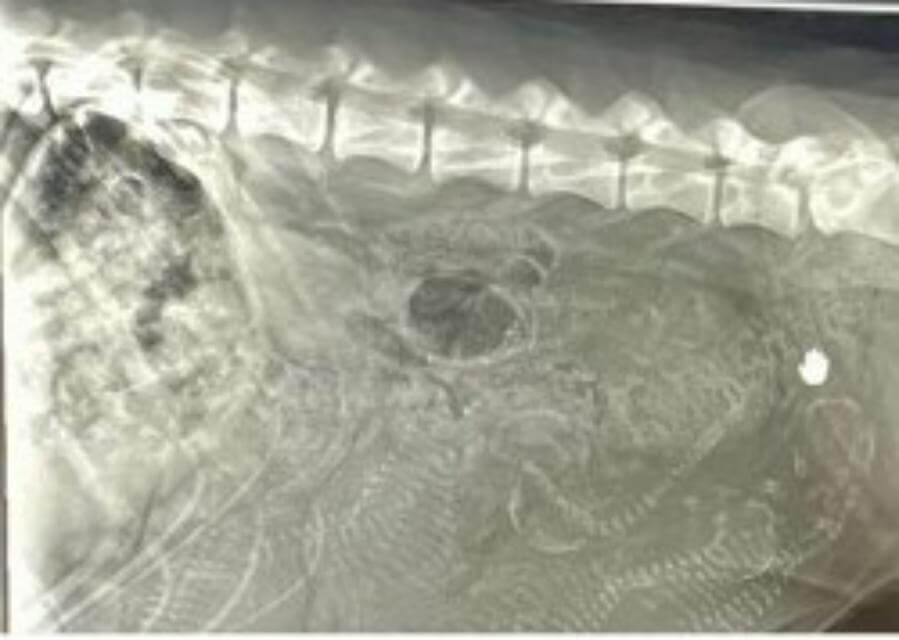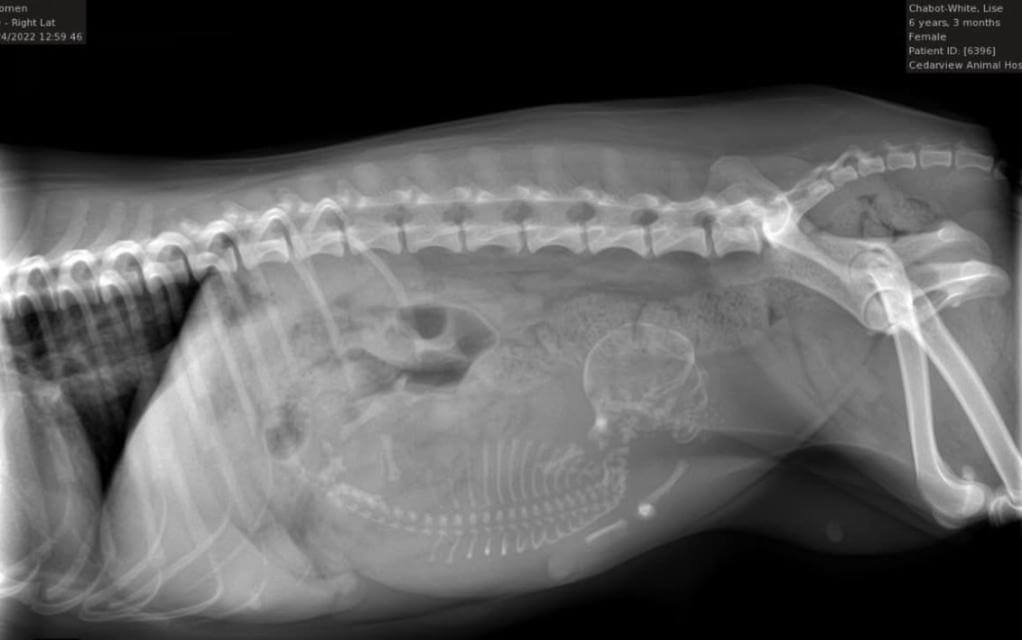
Home » Doing It All: The Importance of Vaginal Smears and Ultrasound Management of Pregnant Bitches

Technology is changing breeding outcomes, but we must not forget the value of vaginal smears as I recently learned. I bred my six-year-old maiden bitch with twenty-year-old semen and got a lovely litter of eight puppies. It was not as straight forward as I make it sound, but the lessons I learned are invaluable and ones to share with other breeders. This is a case study of two first-time breedings of older bitches (5- and 6-year-olds) who were bred using frozen semen. The semen in both cases was good quality; both girls had Transcervical Inseminations (TCI) timed by progesterone levels. From there, management varied and so did the outcomes.

The six-year-old bitch was seen prior to breeding and was found to have white blood cells in her vaginal smear. She was started on Clavamox awaiting the culture results. When the culture results were received, Baytril (enrofloxacin) was added to her treatment regimen for two weeks. She was seen about two weeks later for her insemination, which went well. Twenty-eight days later she returned to have an ultrasound performed to determine if she was pregnant. There were at least four fetuses identified, but it was also noted that the placentas appeared thickened, indicating there may still have been infection or inflammation present.
With serious possible effects on the puppies, the Baytril was restarted. Baytril has been associated with effects on cartilage growth and is avoided in young, rapidly growing animals. However, it is felt that only a very small amount of drug passes across the placental membrane during gestation, and cartilage growth is unlikely to be significantly affected. The best plan is to avoid it, but when needed, pharmacologists suggest using it. Two weeks later, a repeat ultrasound showed improvement in visible placentas, so the Baytril was stopped. A week prior to her delivery date, an x-ray was done, revealing 7-8 puppies of normal size. Because of a maternal history of uterine inertia, she was scheduled for a c-section the following week which went well, producing eight normal-appearing, healthy puppies.

The second, five-year-old bitch was first seen on the day she was ready to be bred. At that visit she had a vaginal smear done, which also revealed white blood cells. A culture was not done, as there was no time to get results prior to insemination. Because of the white blood cells, she was started on Clavamox. Four weeks post-transcervical insemination, the bitch had an ultrasound at their usual vet who did the examination to decide if she was pregnant or not. The exam revealed that she was pregnant and carrying four to six puppies. About one week before her due date she had an x-ray which showed she was carrying only one large puppy. She also had a c-section to deliver the one remaining puppy. Evidence was found within the uterus that other fetuses were present at one time, as abnormal contents remained in the uterus and were removed.

So, what’s the point here? Details are important, don’t ignore them. Are older bitches more prone to subclinical infections like this? Possibly, I don’t know, but it makes me think that breeding females, especially older females, may have better outcomes if you consider the following:
The six-year-old female, her puppies, and her owner averted an awful disaster thanks to an excellent reproduction specialist. I encourage you to consider choosing a veterinarian who will help to assess and manage any issues well to avoid the potential disasters many of us have sadly faced. Even that simple little vaginal smear at a cycle’s onset can be key to getting the desired outcome. Did I tell you how thrilled I am with these puppies?

